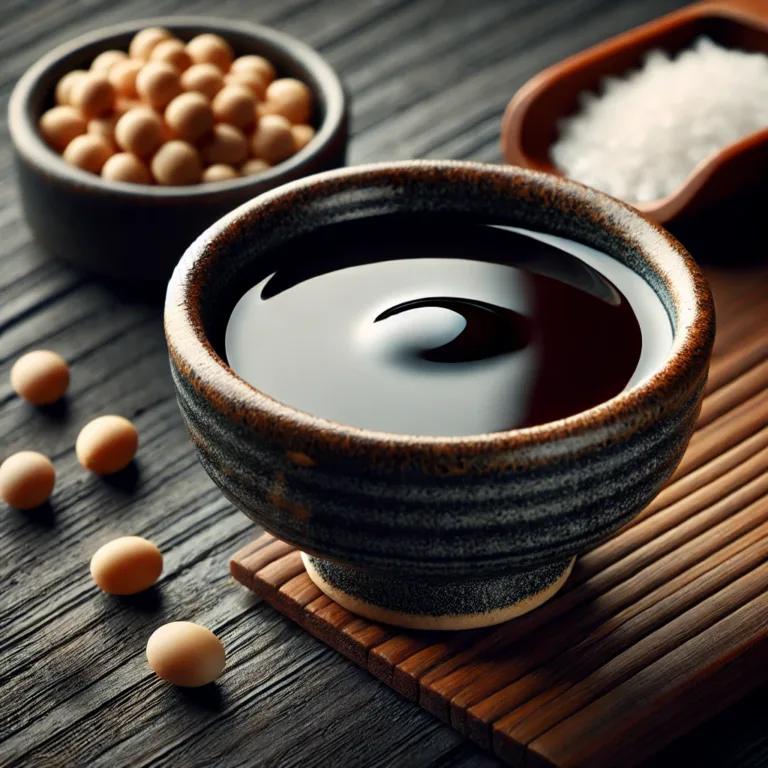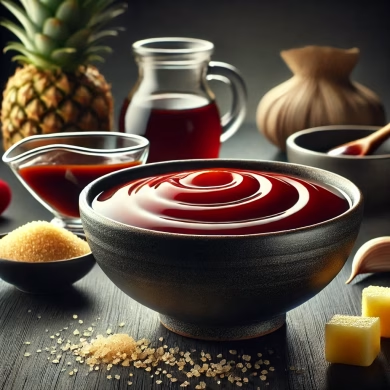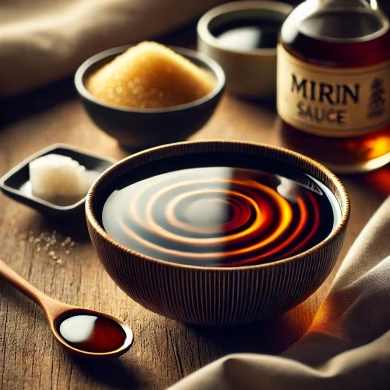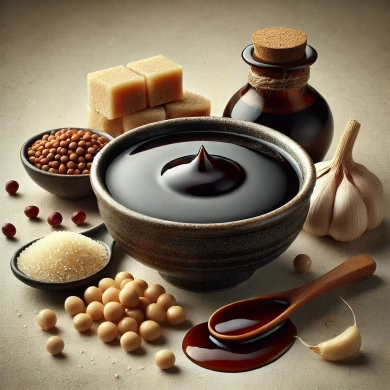What Is Tamari Sauce?
Tamari sauce is a rich, umami-packed soy sauce variant originating from Japan. Unlike regular soy sauce, it contains little to no wheat, making it a preferred choice for those seeking a gluten-free alternative. Known for its smooth, well-balanced taste, Tamari enhances a variety of dishes, from stir-fries to marinades. Its deep, savory essence makes it a staple in Asian cuisine and beyond.

A Brief History of Tamari Sauce
Tamari traces its roots back to Japan’s Edo period when it was first crafted as a byproduct of miso paste production. As soybeans fermented, they released a liquid that developed into this rich, naturally brewed sauce. Over time, it gained popularity for its robust umami profile, setting it apart from lighter soy sauces. Today, Tamari is widely used in Japanese cooking and appreciated globally for its complex yet smooth taste.
Key Ingredients in Tamari Sauce
Traditional Tamari sauce is made from a few essential components, each contributing to its deep and nuanced flavor:
- Soybeans: The primary ingredient, responsible for the sauce’s intense umami taste.
- Salt: Provides the necessary balance and preserves the sauce during fermentation.
- Water: A key element in the brewing process, aiding in consistency and flavor extraction.
- Koji Mold: Essential for fermentation, breaking down soy proteins and enhancing taste.
- Optional Additions: Some varieties include a trace of wheat, although many remain completely gluten-free.
Preparation and Fermentation Time
- Preparation Time: 15 minutes
- Fermentation Time: 6 months to 3 years
- Total Time: Varies based on the aging process
How Tamari Sauce Is Made
Ingredients:
- 2 cups organic soybeans
- 3 tablespoons sea salt
- 4 cups filtered water
- 1 teaspoon koji spores
Instructions:
- Soak the Soybeans: Rinse and soak the beans overnight until softened.
- Cook the Soybeans: Boil them until tender, then allow them to cool slightly.
- Add Koji and Salt: Mix the koji spores and salt with the cooked beans.
- Ferment the Mixture: Transfer the blend to a fermentation vessel and add water.
- Age the Sauce: Let it ferment for a minimum of six months, stirring occasionally.
Strain and Bottle: Once aged, strain the liquid and store it in sterilized bottles.
Tips for Perfect Tamari Sauce
- Monitor Fermentation: Keeping the mixture at a stable temperature ensures proper aging.
- Use Quality Ingredients: Higher-quality soybeans and salt yield a richer taste.
- Adjust Aging Time: A longer fermentation develops deeper umami notes.
- Store Properly: Keep Tamari in an airtight container to preserve freshness.
Nutritional Information (Per Tablespoon Serving):
- Calories: 10
- Fat: 0g
- Carbohydrates: 1g
- Protein: 2g
- Sodium: 900mg
Frequently Asked Questions (FAQs) About Tamari Sauce
Q: Is Tamari sauce always gluten-free?
A: Most Tamari sauces are wheat-free, but some may contain trace amounts. Checking labels ensures it meets dietary needs.
Q: How does Tamari differ from regular soy sauce?
A: While both derive from fermented soybeans, Tamari has a thicker texture and a less salty, more umami-rich flavor.
Q: Can I substitute Tamari for soy sauce in recipes?
A: Yes! It works as a direct replacement, offering a deeper, smoother taste in most dishes.
Conclusion
Tamari sauce is a versatile, umami-packed condiment that enhances countless recipes. Its fermentation process develops a deep, smooth flavor, making it a favorite among chefs and home cooks alike.








Leave a reply